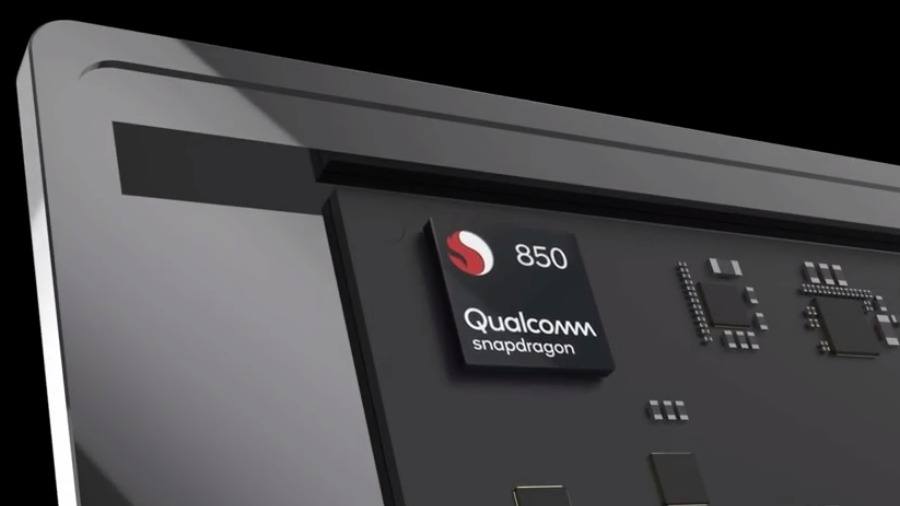
Full disclosure: When he's not covering mobile tech of a different sort over at our sister site Dgit, Steven works at Qualcomm.
Qualcomm and Microsoft have teamed up to bring an all-new (ish) experience to consumers with their "Always on, Always connected PCs" using the Qualcomm Snapdragon 850 processor. This idea is nothing new. Intel tried — and failed — many times. Now it seems the revived partnership of Windows and Qualcomm finally got it right.
Three devices are already run Windows on Snapdragon (called WoS devices), using the Snapdragon 835 SoC:
Amazon ASIN: HP Envy B07C7XY7GS
Amazon ASIN: Lenovo Miix 630 B07C8BJ1NT
Amazon ASIN: Asus NovaGo B07CYX3DG8
Despite that, you should wait for the Snapdragon 850 computer-optimized processor. Here are five reasons why.
Microsoft hasn't made its WoS device yet.
Personally, I think this is by far the most important reason. While Asus, HP, and Lenovo all make great notebooks and PCs, they don't have the advantage Microsoft does — designing both hardware and software. Sure, it's not quite the optimized software and hardware approach of Apple, but it's certainly close. Microsoft and Qualcomm have worked very closely on this initiative and aren't going to release a product until it is well polished, refined, and ready for prime time.
*Note: Microsoft is not designing the SoC, but working closely with Qualcomm on the design to adapt a mobile ARM processor to work in a x86 emulated environment with almost 1:1 performance.
The Snapdragon 850 is a notebook and PC-optimized Snapdragon 845
It's not just that the 845 is beefier than the 835. The 850 is a tweaked version of the 845, specifically made for this purpose. The chip apparently sports a 30 percent boost in performance, 20 percent better battery life and 20 percent faster data speeds (peak) over the 835. Furthermore, the 850 is built on a 2nd generation node at 10nm, same as the 845, paired with the new and improved X20 modem.
These improvements should be taken with a grain of salt — powering a notebook or a PC is a lot harder than a smartphone. However, if the 835 on the first three WoS devices is any indicator, the 850 do just fine.
Battery life
We all know how much it sucks to crunch out work on a notebook, when that inevitable low battery indicator flashes up. Even the most power-efficient notebooks run out of juice sometimes.
This is where the Snapdragon 850 is going to be a game changer.
The 850 bridges the gap between the horsepower needed for notebook level compute power and the multitasking mobile experience we enjoy on our smartphones. Coupled with Microsoft's software prowess and optimization efforts, Snapdragon 850-powered Windows PCs should get more than 20 hours of real world battery life.
Hell, the 835-powered WoS devices already get that much, if not more. The 850 might actually last even longer.
Seamless transfer from Wi-Fi to LTE
This is possibly the most exciting aspect of the WoS overall, but even more so with the Snapdragon 850.
Cellular connectivity is not a new concept to Intel powered Windows devices, by any means. It's just that historically they have all been crappy.
Microsoft doesn't need to worry about integrating the X20 LTE modem, since Qualcomm did it. Qualcomm regularly releases reference designs for its customers. Operators like Sprint already offer excellent data plans on WoS devices.
Lastly, the connectivity experience will be the first of its kind. In theory, you'll be able to work in an airport lounge on Wi-Fi, hopping in your Uber for your ride home, and keep working on 4G LTE without even missing a beat. Upon arriving home you'll reconnect to Wi-F and you won't even be able to tell.
Software support: If you build it, they will come
Like any disruptive technology it takes time to develop a robust and comprehensive ecosystem in which to thrive. Software developers will need to recompiling and modifying their x86 versions to work in an ARM environment, which will unquestionably take time. However, it is in the best interest of Qualcomm and Microsoft to make this process as smooth and straightforward for software developers as possible.
By gettingt WoS out and running on the 835 earlier this year, developers got to see what the process was like, and Microsoft got a chance for feedback on how to improve. With new SDKs and 64-bit app support rolling out soon, it seems like just a matter of time before WoS supports all your favorite apps.
What do you think about Windows devices being powered by the Snapdragon 850? Drop a line in the comment box below and add to the conversation!
from Android Authority https://ift.tt/2mXMOO3
via IFTTT
No comments:
Post a Comment